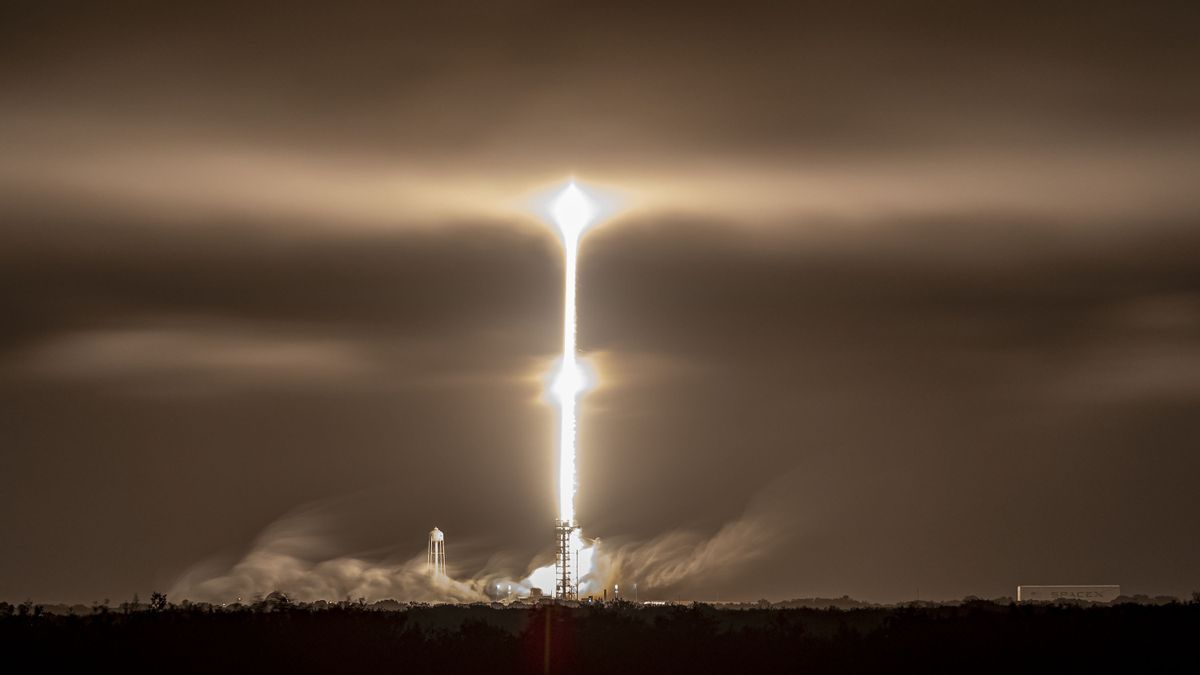JAKARTA - SpaceX plans to kick off its 2022 launch schedule with a Thursday, January 6 flight of its Falcon 9 rocket from NASA's Kennedy Space Center, carrying the Starlink internet satellite from their group of companies.
In a change from previous Starlink missions, the Falcon 9 rocket will fly southeast from the Florida coast on a path north of the Bahamas to put a new batch of internet satellites into low Earth orbit a few hundred miles above Earth.
The mission, dubbed Starlink 4-5, is expected to target an orbital plane tilted 53.2 degrees to the equator, one of five orbital "shells" at different tilt angles that SpaceX plans to stock up with about 4,400 satellites to provide fast, low latency broadband connectivity worldwide.
Previous SpaceX launches that brought the Starlink satellite into a similar orbit have flown northeast from Florida's Space Coast. Southeastern launches should fly around the Bahamas to avoid the risk of dropping debris on populated islands.
The maritime warning notice indicated the mission scheduled for Thursday would do just that, tracking the Atlantic Ocean north of the Abaco Islands, before turning right slightly to head further down.
SpaceX plans to land its Falcon 9 first-stage booster aboard the "A Shortfall of Gravity" drone ship positioned in the Atlantic. The landing platform departed from Port Canaveral on Saturday to head for the recovery zone.
Thursday's launch is targeted at 4:49 p.m. EST (21:49 GMT), with backup time available at 6:47 PM EST (23:47 GMT).
Meanwhile, the crew on the nearby Cape Canaveral Space Station are preparing another Falcon 9 rocket to take off no earlier than January 13 with dozens of small satellites from US and international customers. The mission, known as Transporter 3, is SpaceX's third special rideshare launch that transports a small satellite into solar synchronous orbit.
Jan. 13 takeoff time is set at 10:25 a.m. EST (15:25 GMT), and SpaceX is expected to land its first stage on the ground runway at Cape Canaveral.
The mission set for Thursday will mark SpaceX's 34th special launch with the Starlink satellite. SpaceX has not said why the Falcon 9 rocket will take a southeastern route to orbit on its next flight, or revealed how many Starlink satellites will be on board.
According to a spaceflightnow.com report, special Falcon 9 launches aboard SpaceX's latest generation Starlink spacecraft have carried between 48 and 53 satellites for a mission. SpaceX has launched 1,944 Starlink satellites to date, and subsequent missions will push that number closer to 2,000.
But not all of the satellites remain in orbit. Some have failed after launch, and SpaceX has purposely deorbited others, either due to technical issues or obsolescence as newer designs hit orbit.
A tabulation by Jonathan McDowell, an astrophysicist, and expert space activity tracker, shows SpaceX had 1,468 satellites providing Starlink internet service as of Sunday.
SEE ALSO:
The flat-panel satellites are a little over a quarter ton each. Following separation from the Falcon 9 rocket, the satellites will use krypton-fueled ion boosters to maneuver into their operating orbit at an altitude of 335 miles (540 kilometers), joining the rest of the Starlink fleet.
SpaceX has long-term plans to launch as many as 42,000 Starlink satellites, according to the company's filing with the International Telecommunication Union. The company's initial focus was to deploy about 4,400 satellites into the first five orbital shells.
Jonathan Hofeller, vice president of Starlink and SpaceX commercial sales, said last month that the Starlink network provides internet services to consumers in more than 20 countries.
“We have more than 100,000 customers, both on the consumer and enterprise side,” he said during a panel discussion at Euroconsult's annual World Satellite Business Week event in Paris. "And we're not slowing down. We just warmed up".
SpaceX hopes to use the revenue from the Starlink business unit to help fund the company's ambition to complete the development of the Starship heavy-lift rocket, a large, fully reusable launcher designed to eventually replace the Falcon 9 and Falcon Heavy rockets.
The English, Chinese, Japanese, Arabic, and French versions are automatically generated by the AI. So there may still be inaccuracies in translating, please always see Indonesian as our main language. (system supported by DigitalSiber.id)


















